I have to provide some isolated inputs that accept 12-24V. There should be some protection against reverse polarization, transient over-voltage and permanent over voltage (up to 40V) to some degree.
So far, I came up with the following circuit:

- R15+R21 limit the forward current to ~14mA@12V and 30mA@24V
- D1 TVS diode (breakdown ~@13V) protects against transients and voltages above ~26V
- D1 protects against reverse polarization
- R15 limits the current in case of reverse polarization or when D1 is clamping
This design seems suspiciously simple. Do I miss something or should it work as desired?
EDIT:
R21 was meant to provide some additional transient over-voltage protection (ESD), because the TVS diode won't clamp instantly. This was also the reason for choosing a TVS diode instead of a normal one. Is this overkill?
As pointed out, If was somewhat high. I will consider something more like 580 Ohm for R15 and R21 to limit the current to 10-20mA.